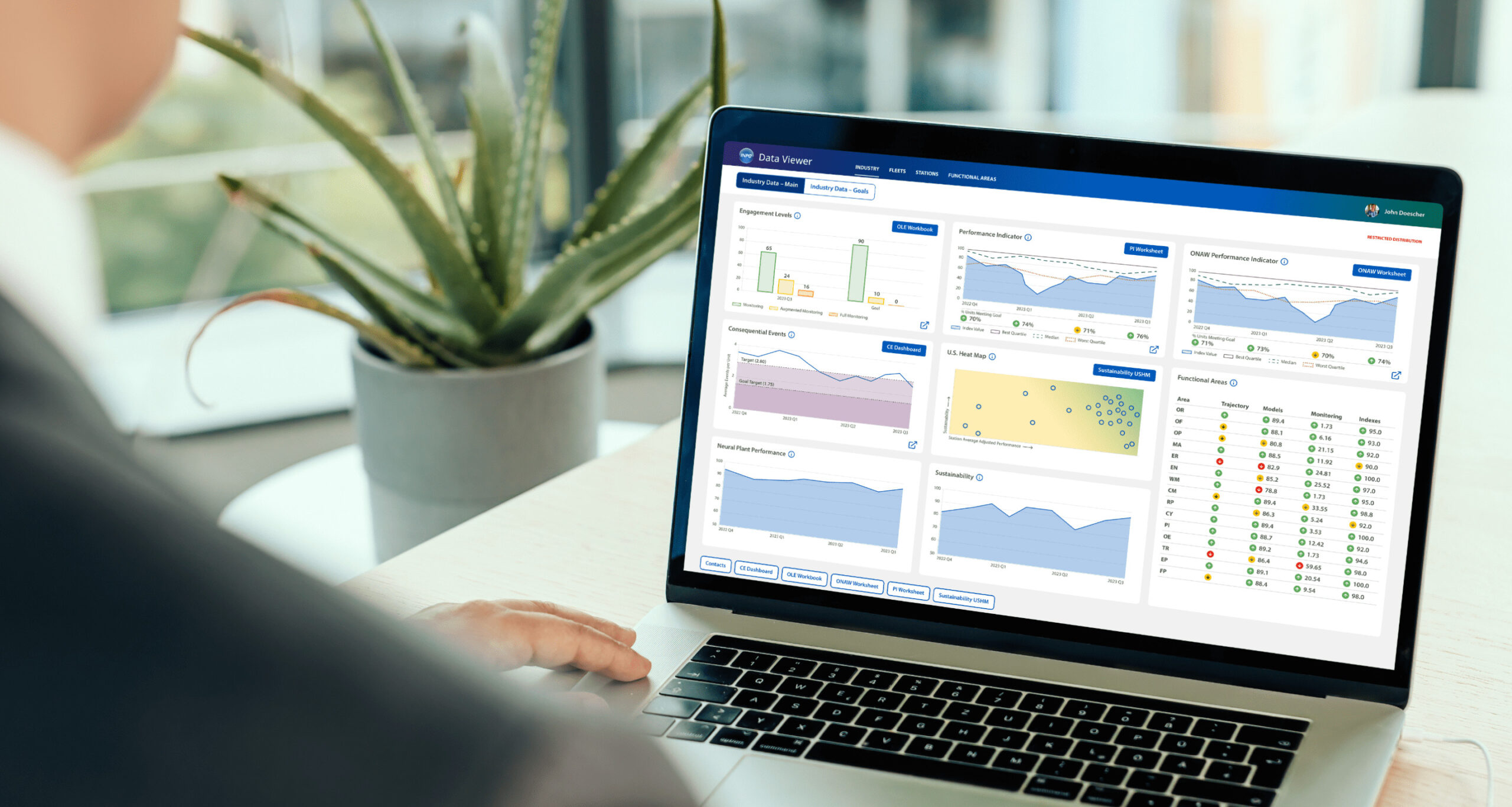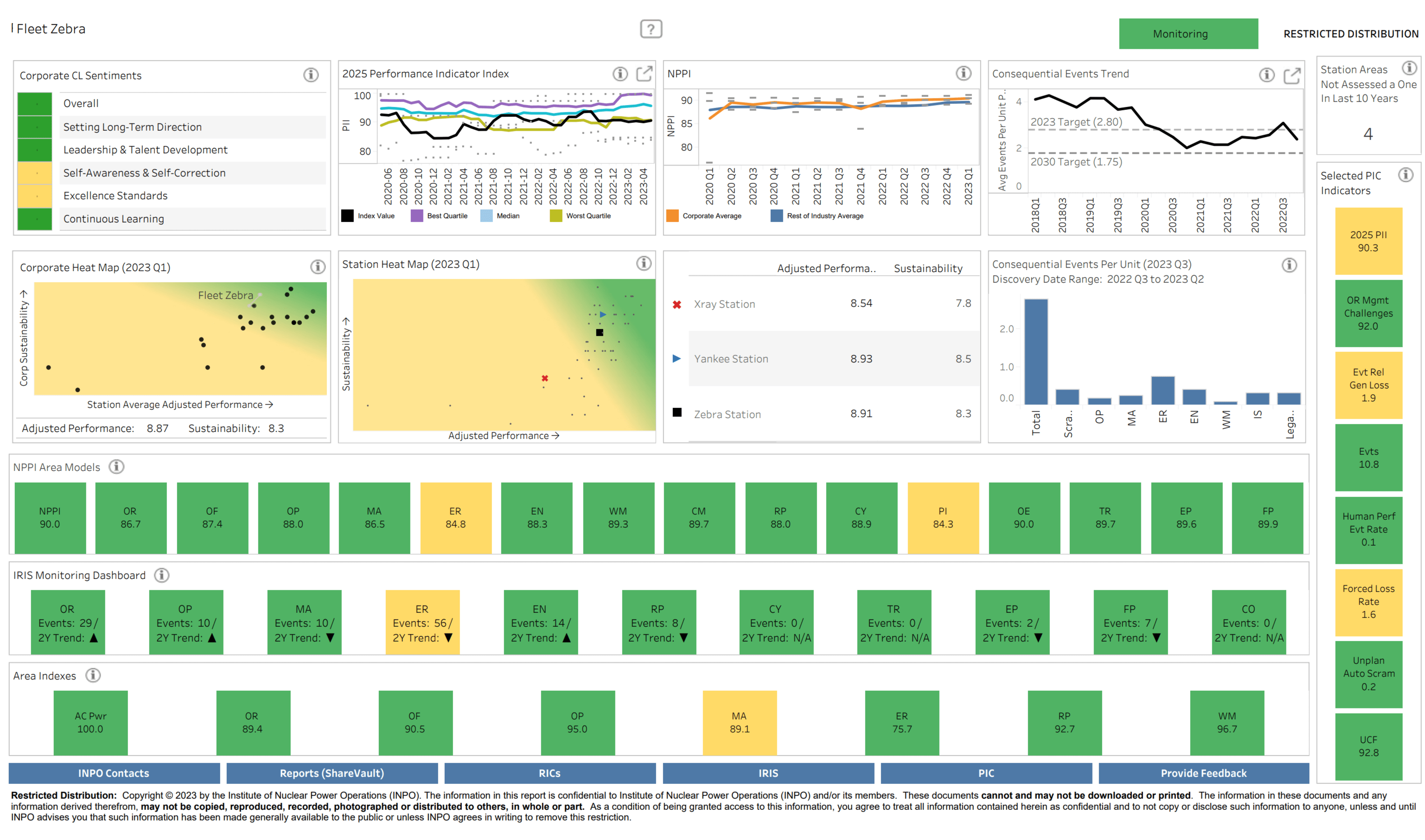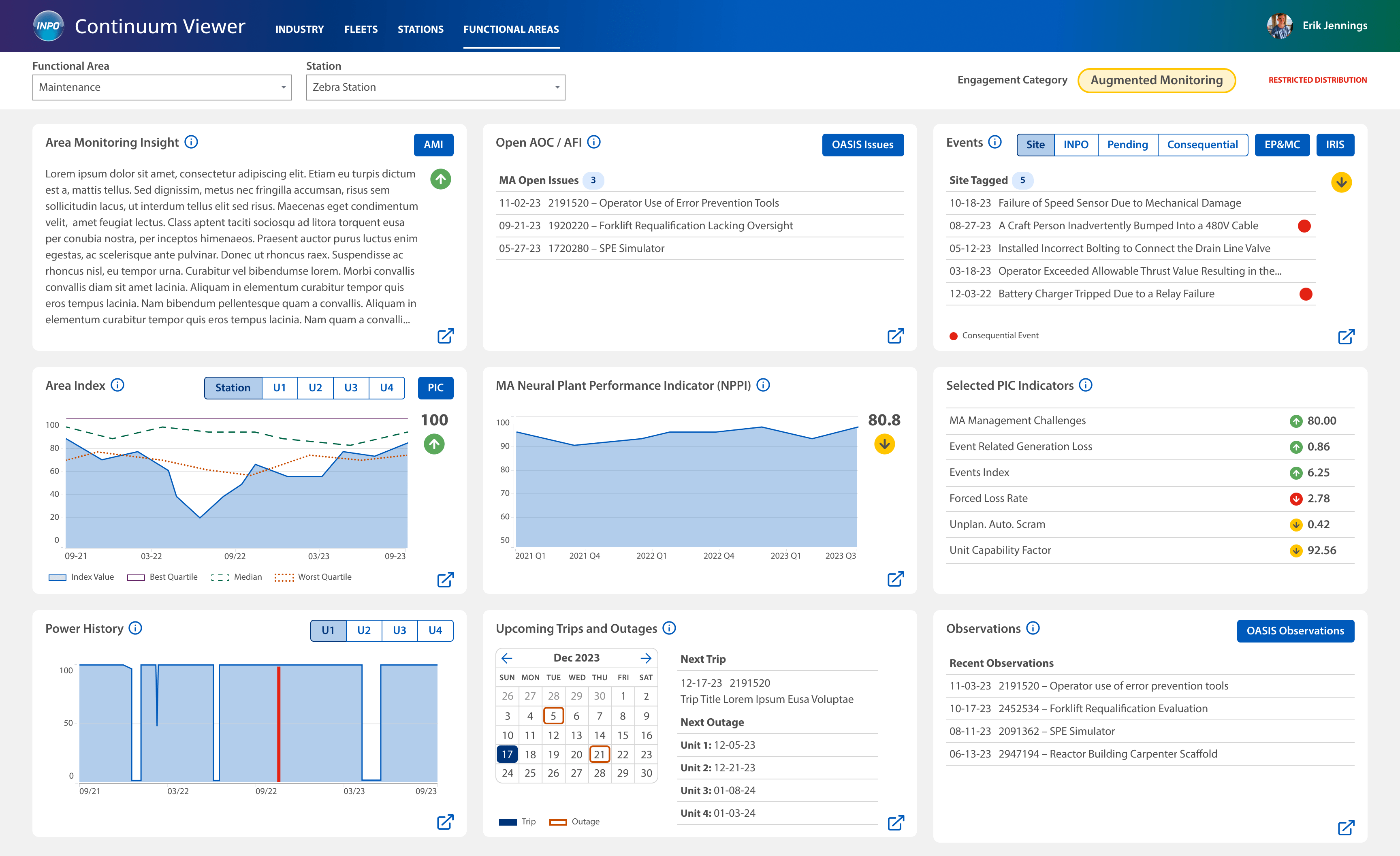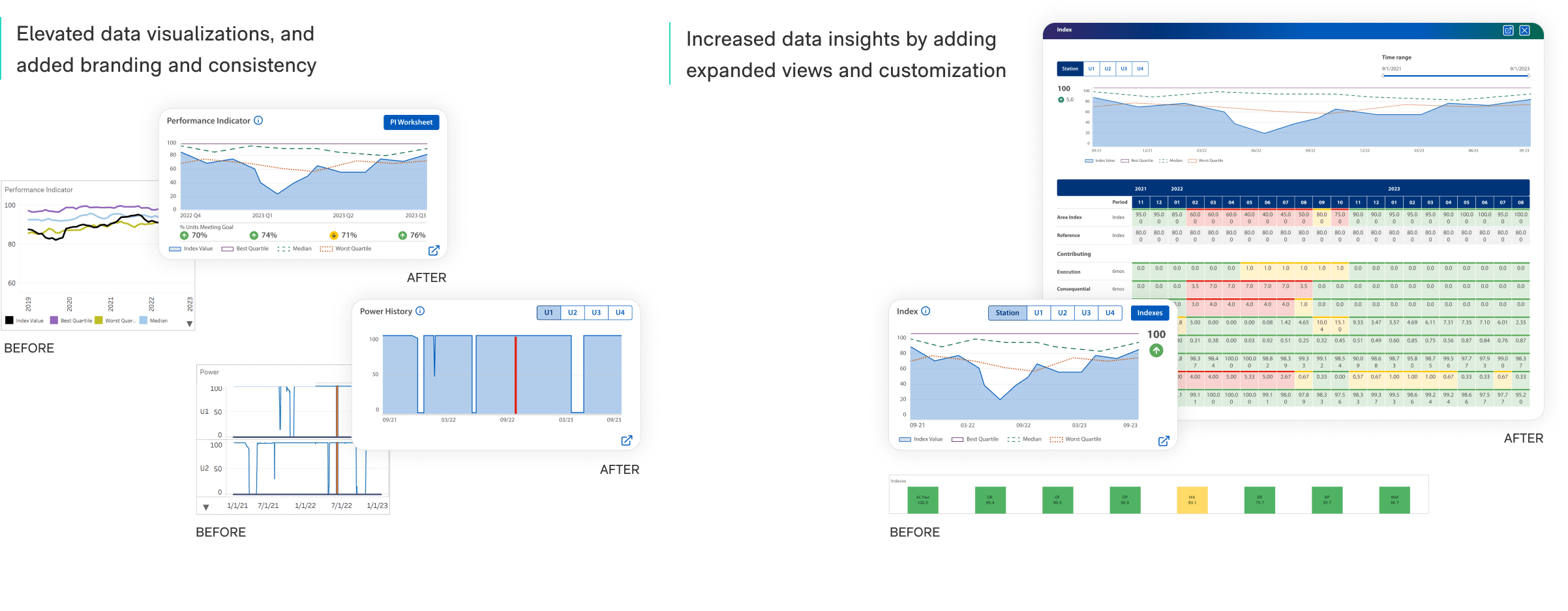user research
Defining the strategy around data story telling
We kicked off this project with an alignment workshop, to understand our client needs and prioritize goals.
The users ranged from C-suite executives, to managers and workers. We immersed ourselves in the complexity of nuclear data, to consult with our clients as to the most effective data visualizations based on our expertise of Tableau and PowerBI.
Through stakeholder and user interviews and workshops, we were able to understand their needs, define a strategy, and prioritize user flows.
User research activities:
- Alignment workshop
- User interviews
- Working sessions
- Product evaluations
- Synthesize findings








